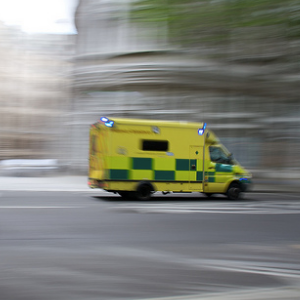
12 May 2014 Networks & Wireless Technology For The Emergency Services
Improvements In Emergency Services Networks
 Ofcom, the UK’s communications regulator, has been hot on the trail of appropriate uses of “White Space” for emergency services and for commercial applications for several years. White space is known as the unused space in the spectrum bandwidth that exists between used bands. Since 2010, Ofcom has advocated for the development of White Space technology to utilise these areas and increase wireless capabilities in what has become a crowded environment.
Ofcom, the UK’s communications regulator, has been hot on the trail of appropriate uses of “White Space” for emergency services and for commercial applications for several years. White space is known as the unused space in the spectrum bandwidth that exists between used bands. Since 2010, Ofcom has advocated for the development of White Space technology to utilise these areas and increase wireless capabilities in what has become a crowded environment.
Recent transition to digital television transmissions has broadened the availability of white space. White spaces that carry no information are evident in empty channels in the UK and in empty radio frequencies. These empty channels are valuable but Ofcom wants to make sure they are used wisely.
In 2010, a spokesperson for Ofcom told eWEEK Europe UK, “There are a certain number of spectrum frequencies for TV broadcasts, wireless microphones and wireless cameras. With this broadcasting setup however, there is a whole lot of unused white space between these signals which is lying fallow.
“Currently there is no developed technology that can utilise these white spaces, and what today’s announcement is about is a number of proposals about how this technology would work in practise to exploit these white spaces.”
An Evolving Landscape
Many of the available white spaces are located on lower frequencies. These frequencies have great value in that typically they travel further and provide stronger signals that enable indoor penetration. The range and penetration capabilities make these low frequency white spaces ideal for wireless links to rural areas.
Recently the idea of wireless emergency service communications channels on these white spaces is a real possibility. Cambridge-based technology company TTP is a pioneer with white space technology and stands at the forefront of new applications.
In addition to the development of wireless emergency communications services, white space is also seen as valuable for its long range radio communication capabilities that are currently transmitted on 2.4GHz, Bluetooth and WiFi systems.
TTP has announced that it is working on low power communications systems that do not interfere with existing television communications. Chief of Wireless at TTP, Richard Walker, told media, “With OFCOM committed to regulate TV white space spectrum as a free resource, public safety use could be prioritised to provide the backbone for emergency communications with far greater performance than existing systems. Secure pop up networks could also be deployed quickly, removing the current dependency on local cellular networks – and with no license or data charges to pay, the cost savings is another major benefit.”
Unfortunately, we shouldn’t expect immediate returns on this research which experts are also pursuing in the US and in Europe, but the potential for revolutionising emergency service communications is definitely present with the new technology.
Ofcom Busy With White Space Development
Ofcom has been busy with white space development. In September 2011, the regulator sought to increase the limit of 3G broadcasting because mobile users is rural areas were struggling to receive readable signals. This poor reception would compromise these areas in emergency situations, when they needed to be connected the most.
3G signals are also weak when users are inside, another flaw for emergency communication systems. One solution offered by Ofcom has been to make 2G spectrum available to 3G users. This strategy would lighten the load on 3G broadband demand.
In 2011, Ofcom said, “Rural broadband provision could theoretically happen. That said, we are fairly cautious in our predictions, but we are trying to pave the way for it to be possible.”
With the help of expert technology firms, white space may soon become home to emergency communications services. This would benefit rural areas and make wireless communication in urban buildings much more accessible.
Note: Read about our healthcare wireless services.
Image by: Dave Conner